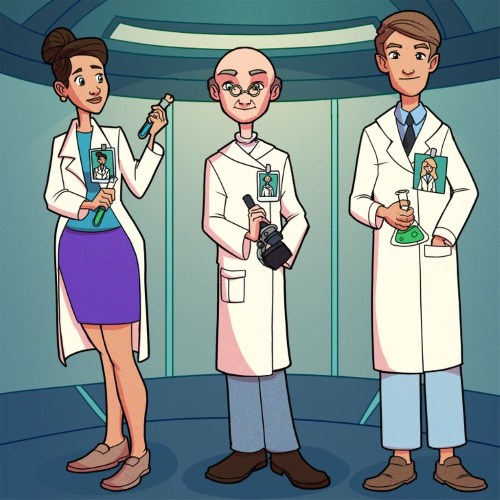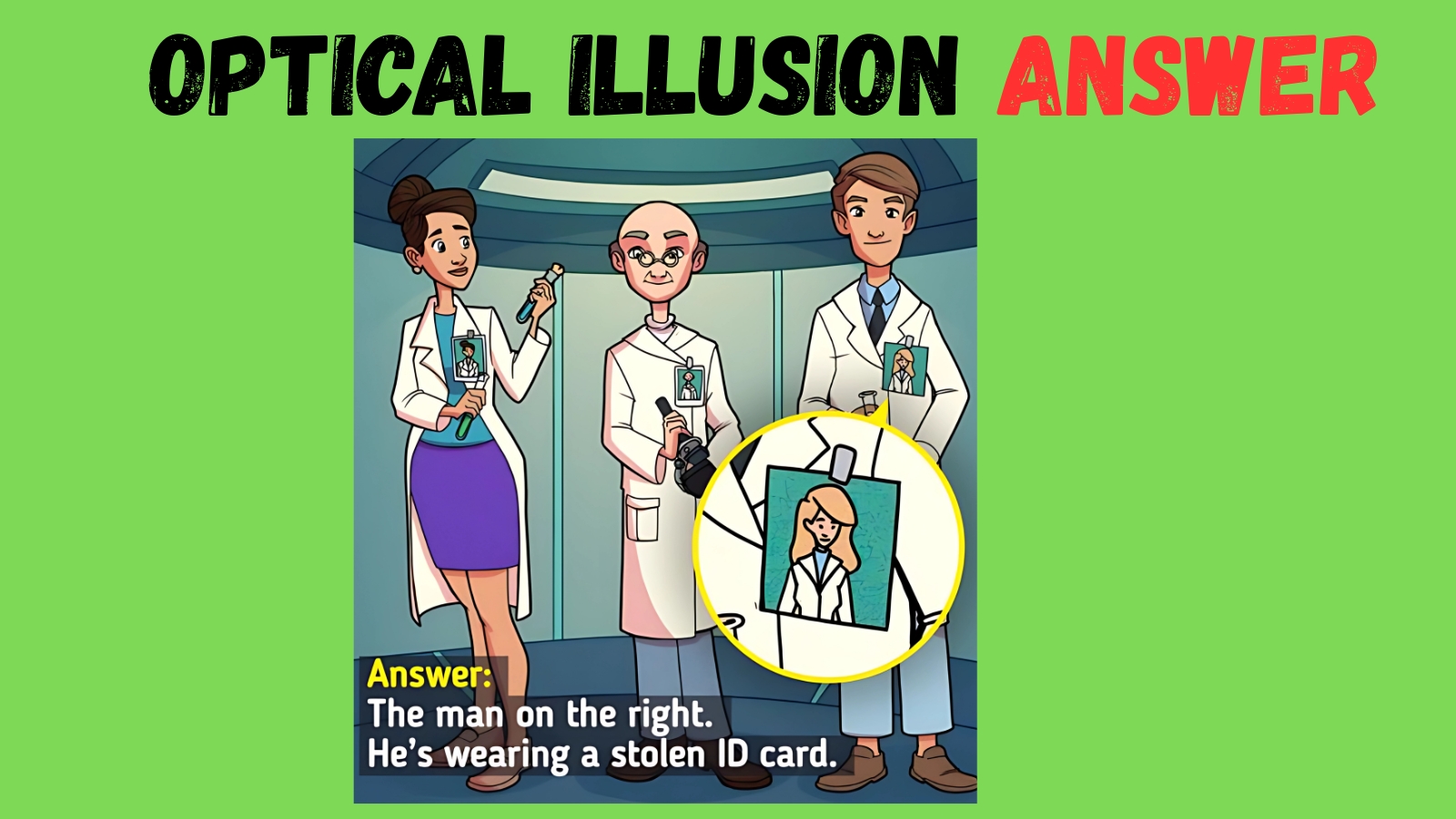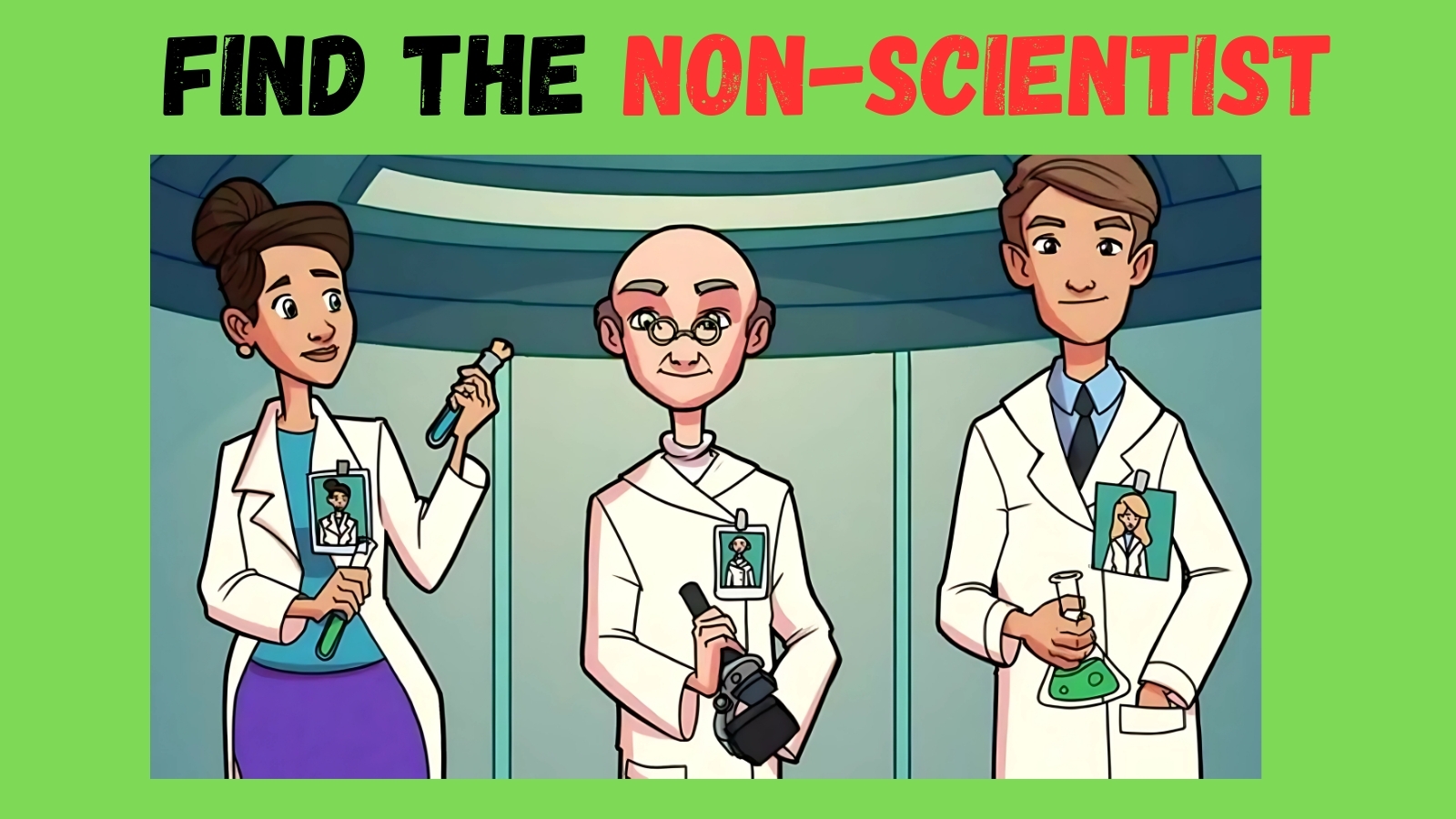Picture this: you’re staring at what appears to be a group of serious academics, all looking scholarly and scientific. But there’s a catch—one of them isn’t actually a scientist at all. This optical illusion has been stumping people worldwide, and once you understand why it’s so tricky, you’ll never look at visual puzzles the same way again.
Why This Particular Challenge Messes with Your Head
Your brain is essentially a pattern-matching machine that’s incredibly good at its job. When you see people in lab coats holding books and wearing glasses, your mind immediately thinks “scientists everywhere!” This automatic categorization happens so fast that you don’t even realize it’s happening.
But here’s where it gets interesting. That same efficiency that helps you navigate daily life becomes your biggest obstacle when solving this type of puzzle. Your brain is so convinced it knows what it’s looking at that it starts filling in details that might not actually be there.
Optical Illusion Test: Find Who Isn’t a Scientist in 7 Seconds

The Psychology Behind the Confusion
Think about how you recognize your friend in a crowded room. You don’t analyze every facial feature—you pick up on key characteristics and your brain does the rest. The same thing happens with this scientist puzzle, except now that helpful shortcut is working against you.
What Makes Someone Look “Scientific” Anyway?
Let’s break down the visual cues that scream “scientist” to most people:
| Typical Scientist Indicators | What to Actually Look For |
|---|---|
| White lab coat or formal attire | Different clothing style or color |
| Serious, focused expression | Relaxed or unusual facial expression |
| Books, beakers, or instruments | Wrong objects or empty hands |
| Glasses and neat appearance | Casual accessories or styling |
| Professional posture | Relaxed body language |
| Academic setting props | Out-of-place background elements |
Smart Strategies That Actually Work
The Systematic Scan Method
Instead of letting your eyes dart around randomly, try dividing the image into sections. Start from the left and work your way across methodically. This prevents your brain from getting overwhelmed and missing crucial details.
Focus on the Unexpected
Rather than looking for what fits, actively hunt for what doesn’t belong. Is someone wearing sneakers with their lab coat? Holding a coffee cup instead of scientific equipment? These subtle breaks in pattern are often the key to solving the puzzle.
Check the Hands and Feet First
Professional puzzle creators love hiding clues in these areas because most people focus on faces and upper bodies. A scientist might be wearing the right outfit but holding completely wrong objects.
The Surprising Benefits of Visual Brain Training
Sharper Everyday Observation
Regular practice with these optical illusion challenges genuinely improves your real-world attention to detail. You might start noticing changes in your environment more quickly or catching mistakes that others miss.
Enhanced Problem-Solving Skills
The mental flexibility required to override your brain’s automatic pattern recognition translates into better critical thinking in other areas of life. When you learn to question your initial assumptions in visual puzzles, you naturally start doing the same with other types of problems.
Making Peace with the Frustration
Here’s something nobody tells you about these challenges: feeling frustrated is completely normal and actually indicates that your brain is working properly. That annoying moment when you can’t find the answer? That’s your pattern-recognition system doing exactly what it evolved to do.
The breakthrough moment when you finally spot the non-scientist often comes when you least expect it. Take breaks, come back with fresh eyes, and remember that different people notice different types of details.
Why Some People Solve It Instantly
If someone figures out this optical illusion immediately, they’re not necessarily smarter—they might just process visual information differently. Some people naturally focus on details first, while others see the big picture. Neither approach is better; they’re just different ways of experiencing the world.
The Real Secret to Success
The most effective approach combines systematic searching with patient observation. Don’t rush the process or get discouraged if it takes time. Each attempt teaches your brain something new about overriding its automatic responses.
Remember, the goal isn’t just to find the answer—it’s to understand how your remarkable visual system works and occasionally outsmart it when precision matters more than speed.
Optical Illusion Answer

Frequently Asked Questions
Q: How long should it take to solve this type of puzzle?
A: There’s no standard time—some people solve it in seconds, others need several minutes. Both are completely normal.
Q: Why do I see the answer immediately after someone points it out?
A: Once your brain knows what to look for, it updates its search pattern and the “hidden” element becomes obvious.
Q: Can practicing these puzzles actually make me better at them?
A: Absolutely! Regular practice trains your brain to be more flexible in how it processes visual information.
Mind Puzzle Optical Illusion Spot the Hidden ‘O’ in a Sea of ‘Q’s in 15 Seconds
